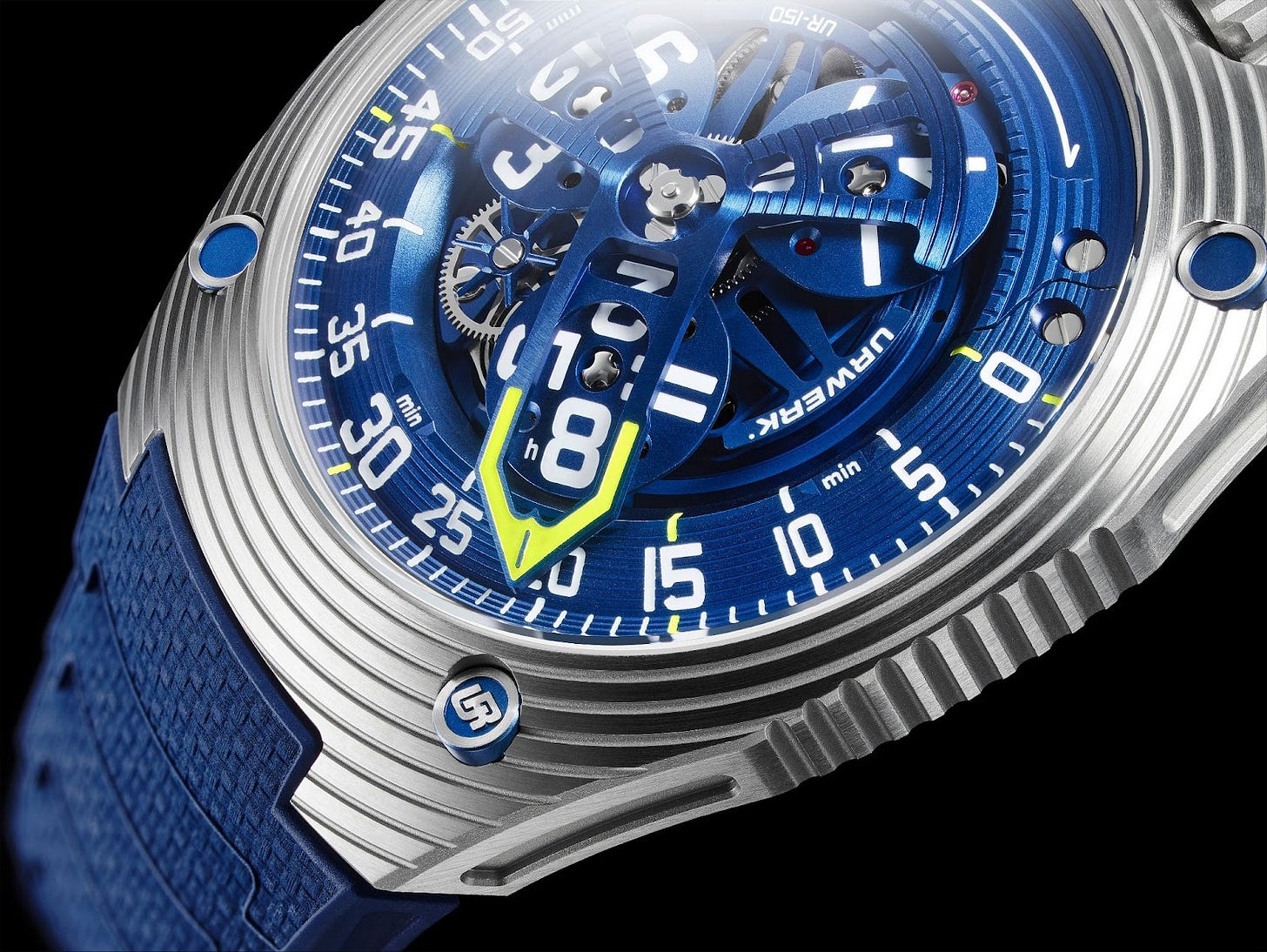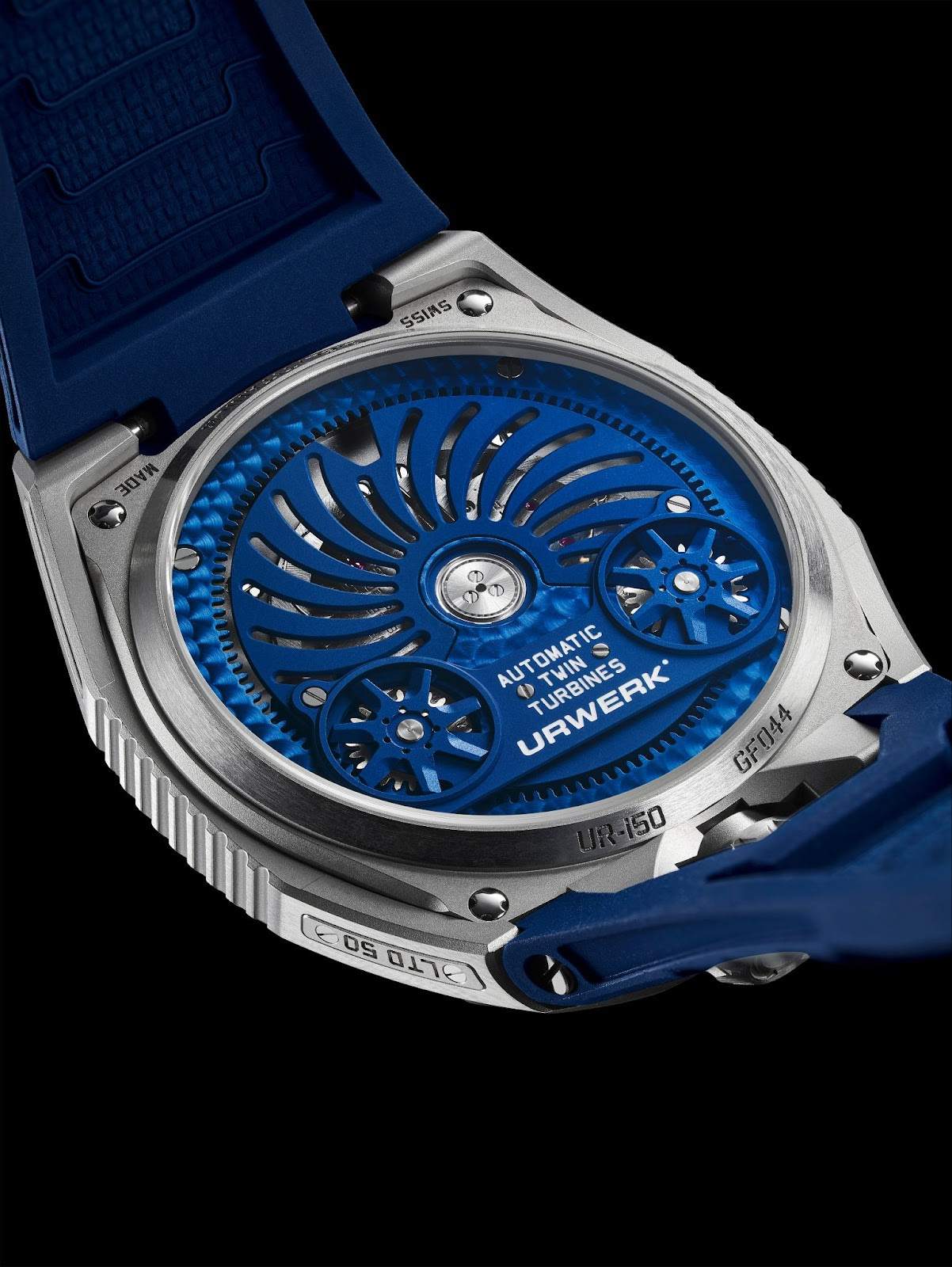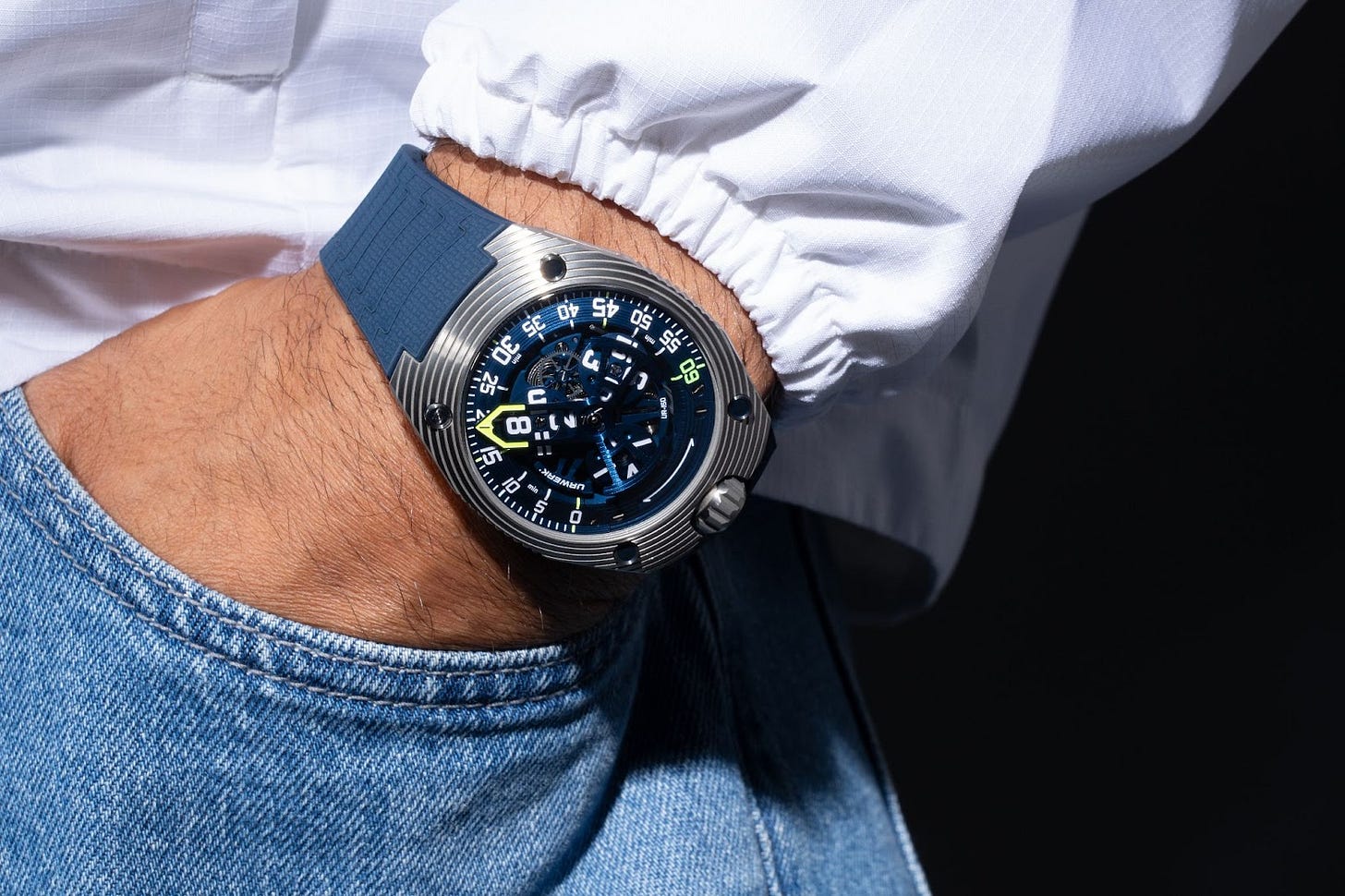When Time Stings and Seduces
Urwerk’s UR-150 Blue Scorpion transforms mechanical logic into ritual theatre. A satellite complication becomes anthropology in motion, capturing how collectors seek meaning in orchestrated chaos.
Every community has its initiations, and in watch collecting, one of them is learning to read time differently. The UR-150 Blue Scorpion does not merely display hours and minutes; it reenacts them in a ritual of shuffling, pivoting, and sudden return. Three satellites orbit in a carousel while a retrograde hand sweeps a 240-degree arc before snapping back in a flash. The social scientist sees not simply a complication, but a rite: the shock of time undone and remade each hour. Cultures once staged eclipses as cosmic theater; Urwerk offers a microcosm beneath sapphire glass.
Collectors interpret these gestures as codes. To wear the Blue Scorpion is to align with a tribe that values kinetic spectacle as much as legibility. Where Patek Philippe collectors rehearse lineage, Urwerk owners display allegiance to disruption. Martin Frei, co-founder and designer, speaks of the “cards in the hours game shuffled and redealt in a hundredth of a second.” The anthropological detail lies in the language: cards, games, risk. The collector is not merely telling time but participating in an ongoing gamble against chaos, a ritualized uncertainty that paradoxically reassures.
The justification Urwerk offers is clarity. The tilted satellites, the precision of their return, the insistence on legibility even in a storm of motion—this is the brand’s creed. Yet ethnography teaches us that justifications conceal as much as they reveal. Clarity here is less about utility than about maintaining coherence in a narrative that risks incoherence. Felix Baumgartner, co-founder and watchmaker, admits as much: “We pushed complexity to its limits in pursuit of a single goal.” Complexity exists not to be solved, but to be endured. For the collector, clarity is code for control—the assurance that beneath spectacle lies mastery.
Every object of ritual contains a tactile detail that seals the bond. In the Blue Scorpion, it is the retrograde hand itself, an articulated skeleton of metal that frames each hour satellite before snapping back. Too fast for the naked eye, it still impresses on the wrist a sense of touch through sight. This is akin to how cultures design fetishes or talismans: their power is not in their utility but in their charged presence. Watch collectors, though they rationalize with words like “precision” and “innovation,” experience these micro-rituals as enchantment. The social scientist notes the choreography: a flash, a reset, a reassurance.
Marketing invokes menace and allure. The “sting of the Blue Scorpion” is not about arachnids but about the frisson of danger cultivated within luxury. Yet the anthropologist sees another truth: the sting is performance, meant to heighten belonging. Owners of the UR-150 will not be stung; they will be seen. Like ceremonial masks, the case and crystal hide as much as they reveal. A domed sapphire stretches like a bow over the dial; steel and titanium form the carapace. At CHF 90,000, limited to 50 pieces, the sting is exclusivity itself, administered not as venom but as privilege.
Urwerk’s mythology always returns to origins. The name refers to the city of Ur, where time was first measured in shadows. “Werk” means mechanism in German. It is a story both primeval and industrial, an etymology that situates the brand at the birth of time and the birth of machines. As in many cultures, origin myths validate present practice. The ethnographer notes the interplay: Mesopotamian ziggurats and Geneva workshops, ancient shadows and aluminum satellites. Myth does not merely decorate craft; it justifies it. Yet unlike brands that inflate heritage, Urwerk invents its own. The proof lies in the craft itself—satellite mechanisms, speed governors, hand-painted lume. The story resonates because the object delivers.
The stated function is accuracy. The UR-50.01 caliber beats at 28,800 vph, with COSC-level precision, a 43-hour reserve, and turbines to govern winding. But the anthropologist sees a deeper function: identity. To own a Blue Scorpion is to mark oneself within a subculture that values extremity. The need satisfied is not punctuality but differentiation. Other collectors seek lineage in Geneva seals or Breguet overcoils; Urwerk devotees seek the opposite—the invention of a new complication, a rupture from canon. Function follows psychology. Accuracy is the excuse; identity is the prize.
The tension between seriousness and absurdity defines this ritual. Consider the resources marshaled: cam and rack systems, governors, pivoting satellites—all to ensure that numerals flash into view at the appointed second. To outsiders, this may seem extravagant. To insiders, it is the very point. Societies perform dances to summon rain; Urwerk performs one to summon time. The disproportion between effort and outcome becomes the poetry. Collectors do not hide from this tension; they revel in it, trading stories of snapped retrogrades like others recount sporting victories. Here lies the ethnographic constant: the human impulse to ritualize excess into meaning.
In the wider cultural moment, the Blue Scorpion’s ritual theatre mirrors a broader shift toward performance across luxury. Ferrari translates speed into ritual, Apple transforms product launches into ceremony, and contemporary art celebrates installations where motion takes precedence over stillness. Collectors conditioned by scarcity economics and social display now crave experiences as much as objects: something to witness, not merely to own. Urwerk’s satellite choreography belongs to this zeitgeist. It is not a watch that hides under a cuff but one that stages time as drama, offering its wearer membership in a micro-culture that values narrative, ritual, and visible distinction. Historically, watchmaking flirted with spectacle in Breguet’s tourbillons or Cartier’s mystery clocks, but in 2025 the demand for spectacle has intensified. The Blue Scorpion channels that hunger, presenting itself less as an accessory than as a performance one straps to the wrist.
Author’s Opinion
So the verdict: the UR-150 Blue Scorpion succeeds not because it is rational, but because it is ritual. The anthropologist concludes that Urwerk has deepened its role as custodian of horology’s avant-garde. It has given collectors not simply a watch but a rite—one that stings with exclusivity, dazzles with motion, and reassures with mastery. If every culture needs its ceremonies, then contemporary watch collecting has found one in the Blue Scorpion: a ritual of chaos carefully controlled, an initiation into belonging, a reminder that even in modernity, we remain creatures of myth.






